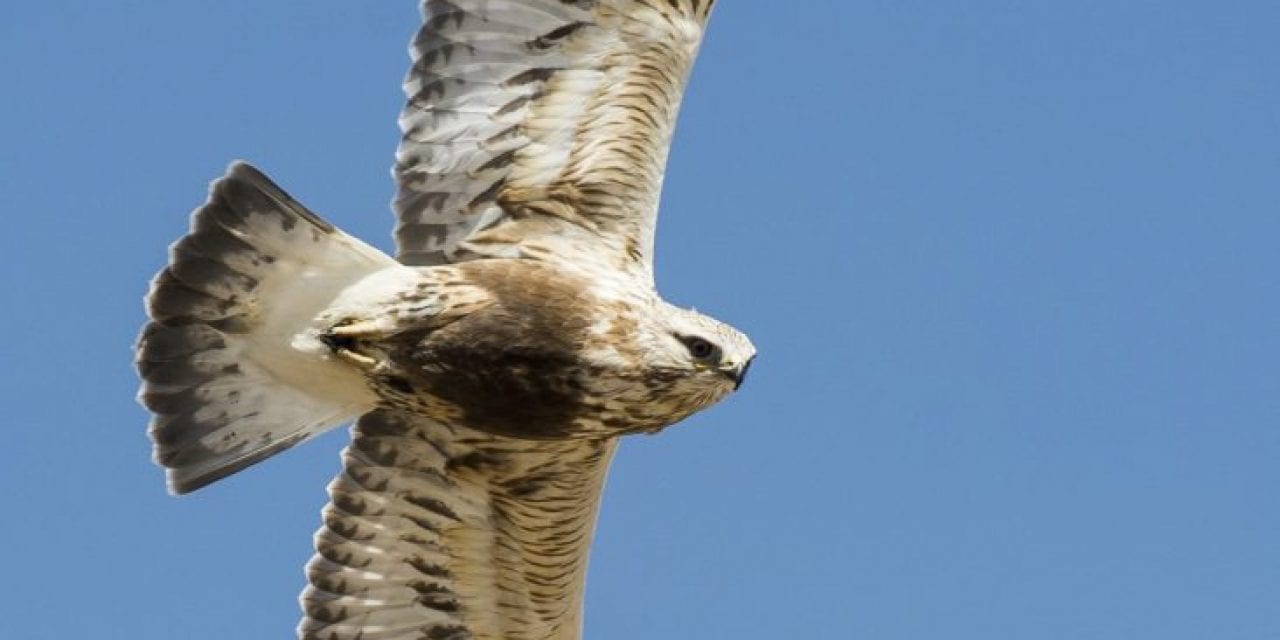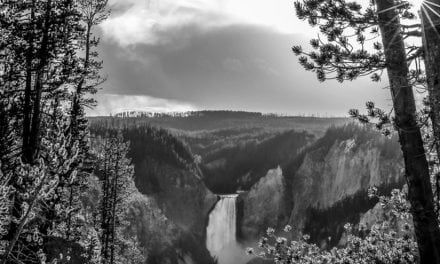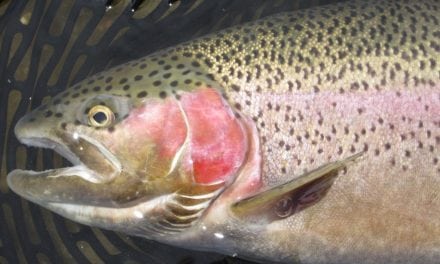The rough-legged hawk may not stand out among raptors in looks, but it lives an interesting life.
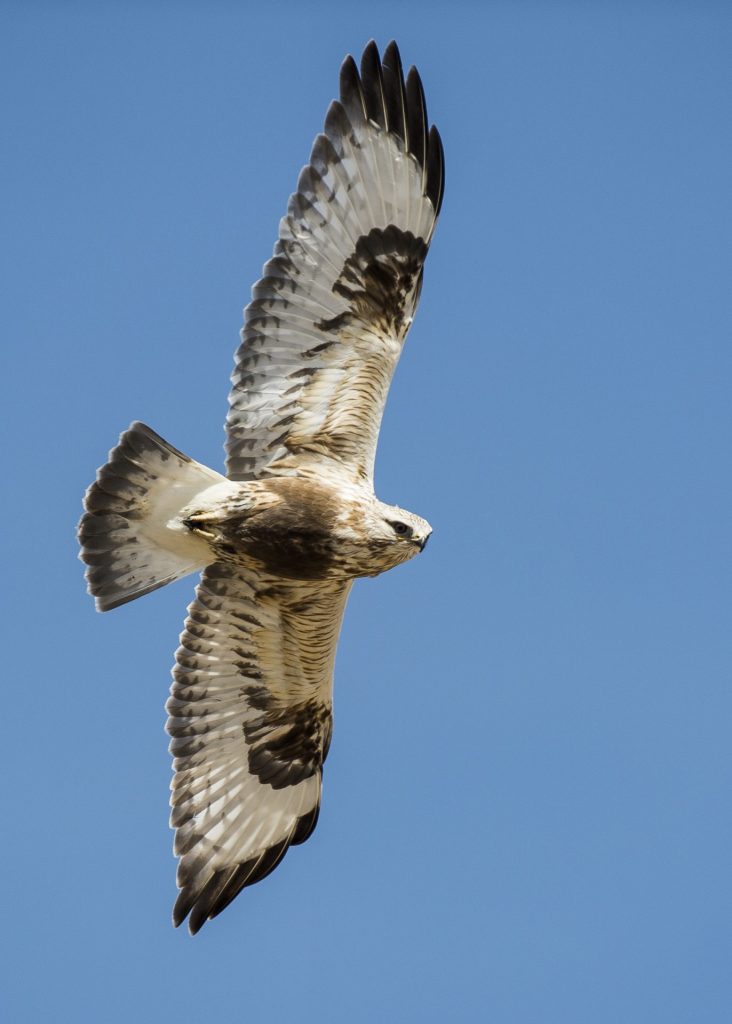
Story and photos by Justin Haag
Perhaps you have seen this species along the road lately, but given its somewhat unassuming appearance, have not given it much thought. The rough-legged hawk, with its mottled brown plumage, blends in well with our landscape during the winter months.
The rough-legged hawk is one of those species that logs many miles a couple of times annually. Those fence posts and utility poles that rough-legged hawks hunt from in Nebraska this time of year provide a much different scene than their hangouts of summer.
Many of these raptors nest on long cliffs some 2,000 miles away in the Arctic where the sun does not set during the summer. They hunt lemmings to feed their brood in bulky nests, which sometimes contain caribou bones. If Nebraskans notice many rough-legged hawks during winter, it might be a good indicator that the lemming population way up north is doing well – at least well enough to provide for the hawks during the nesting period.
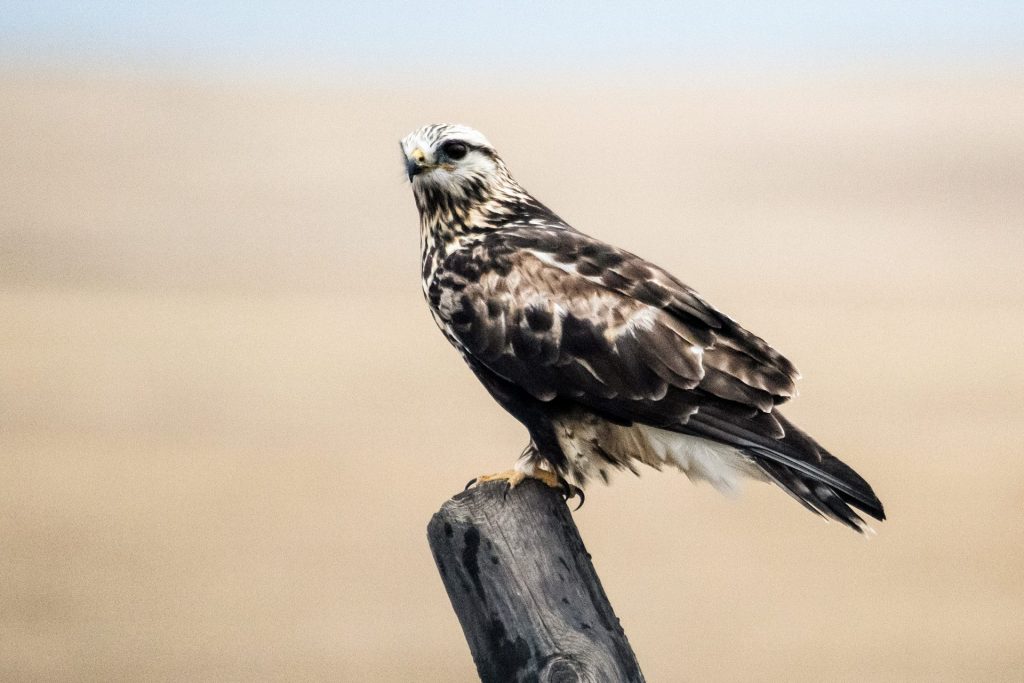
When colder temperatures and much shorter days arrive there, however, the hawks come south and hunt small mammals. They can be seen throughout most of the continental United States, and they really seem to be at home on our expanses of open country in western Nebraska.
Rough-legs belong to the genus of soaring raptors with broad wings known as buteos. Raptors with variable plumage, such as rough-legs, can be among the most challenging birds to identify. Thankfully, though, there are some strong visual indicators with this bird, which is similar in size to a red-tailed hawk.
One identifying mark while in flight is the bold white tail, which has a thick, dark stripe at the end. On the underside, most also have conspicuous black patches on their wrists – the area of the wing a little less than halfway from the end. They usually have a dark belly that stands out in their mottled plumage.
Perhaps one of the best clues for identifying a rough-leg in flight, though, is its method of hunting. The species often hovers above its prey, zeroing in for an attack on an unsuspecting mole, mouse or shrew.
When the hawks are perched, be sure to take a look at those legs. The rough-legged hawk is one of just three raptor species in Nebraska that has feathers on its legs all the way to its feet – the others being the ferruginous hawk and the golden eagle.
The next time you see one of these creatures, marvel at the distance it has traveled and its experiences as a hunter and provider – and even its appearance. It seems all species would have fascinating stories to tell us if they could. ■
The post Ol’ Rough-legs appeared first on Nebraskaland Magazine.

